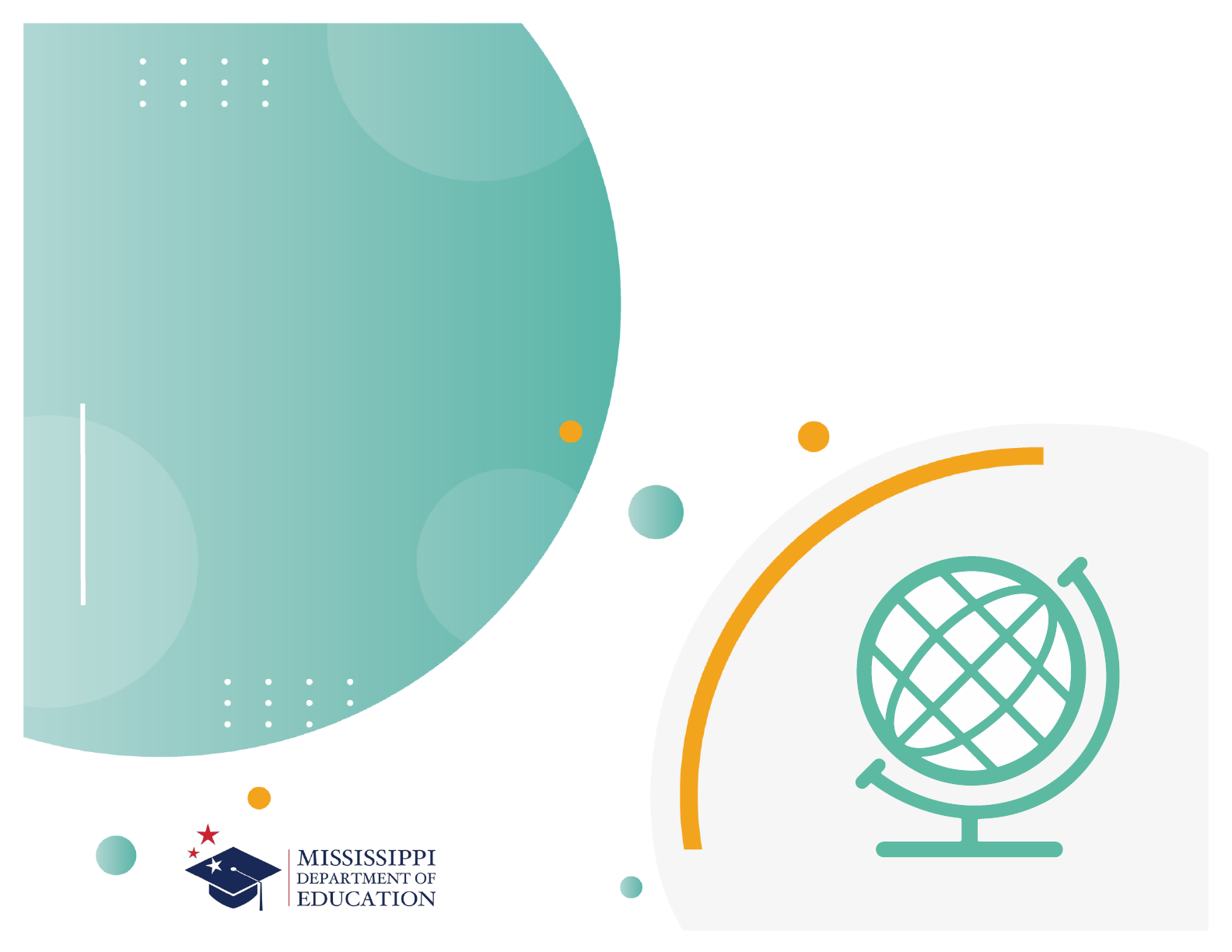
2024
SUGGESTED
INSTRUCTIONAL
PLANNING GUIDE
for the Mississippi College- and Career-Readiness Standards
Social Studies
KINDERGARTEN
Citizenship at Home
and School

KINDERGARTEN
SOCIAL STUDIES
Mississippi Department of Education | Social Studies – Kindergarten IPG | 2024 4
MISSISSIPPI DEPARTMENT OF EDUCATION
Raymond C. Morgigno, Ph.D.
Interim State Superintendent of Education
Donna Boone, Ph.D.
Chief Academic Officer
Wendy Clemons
Associate State Superintendent, Offices of Secondary
Education,
Professional Development, and Career Technical Education
Tenette Smith, Ed.D.
Executive Director, Office of Elementary Education and Reading
Kristen Wynn
State Literacy Director (K-12)
Daaiyah Heard
K-12 State Social Studies Content Director
Jill Hoda
Assistant State Literacy Coordinator
Melissa Beck
Assessment Coordinator (K-3)
SPECIAL ACKNOWLEDGEMENTS
Library of Congress • Mississippi Department of Archives and History • Mississippi Arts of Commission
National Park Service • Alexandria Drake • Lien Beale • Caroline Bartlett • Tammy Crosetti • Stephanie Peabody

KINDERGARTEN
SOCIAL STUDIES
Mississippi Department of Education | Social Studies – Kindergarten IPG | 2024 5
INTRODUCTION
The Mississippi Department of Education (MDE) is dedicated to student success, which includes improving student achievement in
social studies, equipping citizens to solve complex problems, and establishing fluent communication skills while preparing students
for college, career, and civic life. Instructional Planning Guides for the Mississippi College and Career Readiness Standards for Social
Studies serve as a roadmap for teachers to plan and implement effective instruction that aligns with academic standards in the social
studies content area. These guides provide a framework for teachers to develop learning objectives, select appropriate instructional
strategies, and design assessments that measure student understanding and mastery of social studies concepts and skills. The
Instructional Planning Guides are designed to be robust and relevant to the real world, reflecting the knowledge and skills students
need to succeed in college and careers and allowing students to compete in the global economy.
PURPOSE
This document is designed to provide districts, instructional coaches, and K-12 social studies teachers with a basis for curriculum
development. The purpose of Instructional Planning Guides for the Mississippi College and Career Readiness Standards for Social
Studies is to ensure that teachers have access to high-quality resources and support to create engaging and relevant social studies
learning experiences that prepare students to be informed and active citizens. These guides can also help teachers differentiate
instruction to meet the needs of diverse learners, promote cultural understanding and appreciation, and integrate technology and
other resources to enhance student learning.
DEVELOPMENT
Through the adoption of the 2022 Mississippi College and Career Readiness Standards for Social Studies, a committee consisting of
62 members from every congressional district recognized the need to provide educators with a comprehensive resource to develop
their curriculum. The resulting Instructional Planning Guides were developed to suggest learning activities and real-world
connections that are accessible and equitable for all educators in the state of Mississippi. These guides are intended to serve as a
valuable tool to support educators in designing effective instruction that aligns with the standards, fosters student engagement, and
prepares students for success beyond the classroom.

KINDERGARTEN
SOCIAL STUDIES
Mississippi Department of Education | Social Studies – Kindergarten IPG | 2024 6
DISCLAIMER
The purpose of the Social Studies Instructional Planning Guides (IPGs) provided herein, which are developed by the Mississippi
Department of Education, is to offer instructional support to educators. The IPGs are not intended to serve as a comprehensive
curriculum for the classroom.
All learning activities, suggested skills, real-world connections, differentiation techniques, and instructional strategies outlined in the
IPGs are offered as optional resources. They are designed to serve as a guide to assist in the development and enhancement of your
own curriculum.
While the Social Studies IPGs aim to provide valuable insights and recommendations, it is important for educators to exercise their
professional judgment and expertise when utilizing the provided materials. It is not mandatory to strictly adhere to the suggestions
outlined in the IPGs, as individual teaching styles, classroom dynamics, and student characteristics may necessitate adaptations and
modifications.

KINDERGARTEN
SOCIAL STUDIES
Mississippi Department of Education | Social Studies – Kindergarten IPG | 2024 7
RESOURCES
Civics Resources:
• iCivics: Offers educational games, lesson plans, and interactive activities to teach kids about civics and government.
https://www.icivics.org/
• Ben's Guide to the U.S. Government: Provides educational resources on the U.S. government and how it works, designed
specifically for kids. https://bensguide.gpo.gov/
Economic Resources:
• Federal Reserve Education: Provides interactive lessons, videos, and activities to teach kids about basic economic concepts.
https://www.federalreserveeducation.org/
Civil Rights Resources:
• Kids.gov: Offers educational resources on civil rights and equal rights for children. https://kids.usa.gov/
Geography Resources:
• National Geographic Kids: Offers educational resources on geography, including maps, quizzes, and videos.
https://kids.nationalgeographic.com/geography/
• Google Earth: Allows kids to explore different places on Earth through an interactive map. https://www.google.com/earth/
History Resources:
• Smithsonian's History Explorer: Features lesson plans, activities, and interactive resources on various historical topics.
https://historyexplorer.si.edu/
• National Geographic Kids: Provides articles, videos, and games on historical events and figures.
https://kids.nationalgeographic.com/history/

KINDERGARTEN
SOCIAL STUDIES
Mississippi Department of Education | Social Studies – Kindergarten IPG | 2024 8
Table of Contents
Civics
K.CI.1 - Demonstrate how to be a productive citizen.
K.CI.2 - Examine the purpose of rules and consequences.
K.CI.3 - Differentiate the roles and responsibilities of authority figures and leaders.
Economics
K.E.1 – Analyze how money is earned and used.
K.E.2 – Distinguish goods from services.
K.E.3 – Differentiate needs from wants.
Civil Rights
K.CR.1 – Explore the similarities and differences of individuals and families.
K.CR.2 – Examine diversity in the classroom.
K.CR.3 – Identify the cultural origins and explore the customs, traditions, and celebrations of families
and schools.
Geography
K.G.1 – Establish an individual sense of place.
K.G.2 – Investigate the physical features of the environment.
K.G.3 – Recognize representations of the Earth.
History
K.H.1 – Recognize symbols, customs, and celebrations of local communities, Mississippi, and the
United States.
K.H.2 – Describe the impact of significant historical figures and events.

KINDERGARTEN
SOCIAL STUDIES
Mississippi Department of Education | Social Studies – Kindergarten IPG | 2024 9
SUGGESTED
INSTRUCTIONAL
PLANNING GUIDE
for Mississippi College and Career Readiness Standards for Social Studies
CIVICS
Standard K.CI.1: Demonstrate how to be a productive citizen.
Objectives
Vocabulary
1. Define authority figures and leaders.
2. Define a productive citizen and citizenship.
3. Describe the character traits of productive citizens.
4. List examples of productive citizenship at home and school.
• Authority Figure
• Leader
• Productive Citizen
• Citizenship
• Character Traits
• Responsibility
• Respect
• Cooperation
• Kindness
• Honesty

KINDERGARTEN
SOCIAL STUDIES
Mississippi Department of Education | Social Studies – Kindergarten IPG | 2024 10
Learning Activities (Civics: Standard K.CI.1)
Authority Figures and Leaders
• Brainstorm a list of authority figures and leaders (such as parents, teachers, police officers, and government officials)
and discuss their roles and responsibilities.
• Have students role-play different authority figures and leaders and act out scenarios where they make decisions
and enforce rules.
• Create a classroom "leader board" where students can take turns being the leader for the day and making
decisions for the class.
Productive Citizen and Citizenship
• Have students draw pictures or write stories about how they can be productive citizens at home or school.
• Create a classroom or school-wide recycling program and discuss how this is an example of productive citizenship.
• Have students create a class "citizenship pledge" that outlines the behaviors and actions that make a good citizen.
Character Traits of Productive Citizens
• Read stories or watch videos about famous individuals who exemplify positive character traits, such as kindness, honesty,
and cooperation.
• Play games that focus on character traits, such as "I Spy" with positive traits instead of objects.
• Have students create "good citizen" trading cards featuring different character traits and examples of how to exhibit them.
Examples of Productive Citizenship at Home and School
• Take a classroom tour and identify different examples of productive citizenship they see (such as cleaning up after oneself,
helping others, or following rules).
• Interview family members or friends about examples of productive citizenship they see in their community.
• Create a class mural or poster board featuring examples of productive citizenship in the home, school, and community.
• Draw a picture to one of the following prompts or create a different prompt:
a. You find money on the playground. What should a productive citizen do?
b. Your teacher asks the class to be quiet, but your friend tells a joke. What should a productive citizen do?
c. There is a bully on the playground. What should a productive citizen do?

KINDERGARTEN
SOCIAL STUDIES
Mississippi Department of Education | Social Studies – Kindergarten IPG | 2024 11
Real World Connections (Civics: Standard K.CI.1)
Authority Figures and Leaders
• Take students on a field trip to a local government office or community center to meet with authority figures and leaders in
their community.
• Invite local leaders or authority figures to come to speak to the class about their roles and responsibilities.
• Interview family members or friends who hold leadership roles in their community or workplace.
Productive Citizen and Citizenship
• Participate in a community service project, such as a food or clothing drive, to learn about the importance of being a productive
citizen.
• Visit local community centers, parks, or other public spaces to discuss how citizens work together to create and maintain
these places.
• Encourage students to participate in school-wide initiatives, such as recycling or energy conservation programs, to develop
their understanding of productive citizenship.
Character Traits of Productive Citizens
• Create a classroom "character wall" to highlight positive character traits and the behaviors that exemplify them.
• Invite community members to come to speak to the class about the character traits they value and how they exhibit them in
their daily lives.
• Encourage students to practice positive character traits in their daily lives, such as being respectful and responsible.
Examples of Productive Citizenship at Home and School
• Encourage students to identify examples of productive citizenship in their daily lives, such as helping a family member or
cleaning up the classroom.
• Work in small groups to create posters or presentations about different examples of productive citizenship in their community.
• Invite parents or community members to come to speak to the class about how they exhibit productive citizenship in
their daily lives.

KINDERGARTEN
SOCIAL STUDIES
Mississippi Department of Education | Social Studies – Kindergarten IPG | 2024 12
Differentiation (Civics: Standard K.CI.1)
Authority Figures and Leaders
• Provide additional resources, such as picture books or flashcards, to help students identify different roles.
• Provide opportunities for students to research and learn about the roles of specific leaders or government officials.
Productive Citizen and Citizenship
• Provide scaffolding for students who needs additional help with understanding the concept of productive citizenship by
breaking down the definition into smaller parts and providing real-life examples.
• Offer extension activities for students who excel at understanding productive citizenship, such as creating their community
service projects or participating in school-wide initiatives to promote productive citizenship.
Character Traits of Productive Citizens
• Provide visual aids, such as posters or graphic organizers, to help students understand and categorize different traits.
• Provide opportunities for students to apply these skills in real-life scenarios, such as role-playing exercises or mock interviews.
Examples of Productive Citizenship at Home and School
• Provide additional support for students to identify examples of productive citizenship by providing students with more
structured and specific prompts.
• Offer extension activities for students who excel at identifying examples of productive citizenship, such as conducting
interviews with community leaders or creating their own multimedia presentations to highlight examples of productive
citizenship.
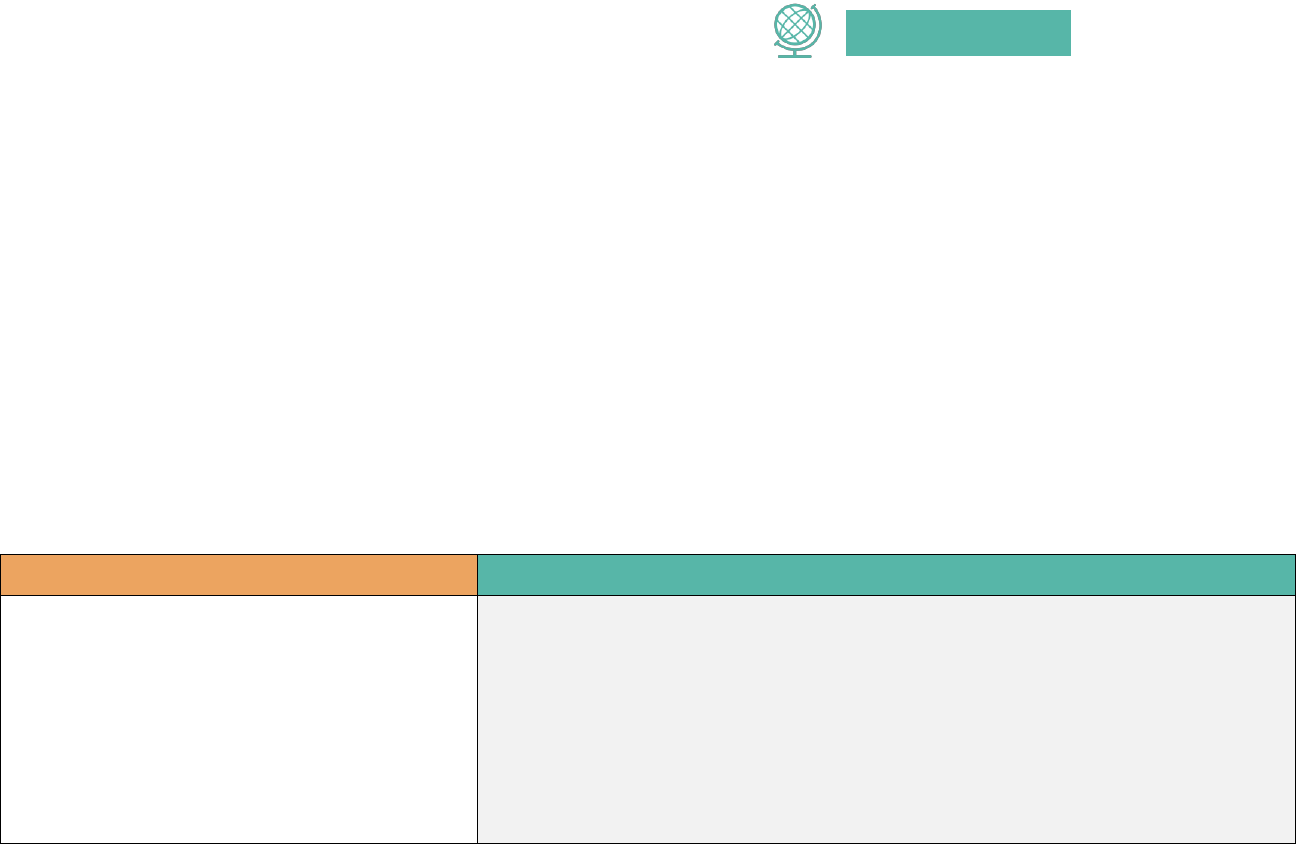
KINDERGARTEN
SOCIAL STUDIES
Mississippi Department of Education | Social Studies – Kindergarten IPG | 2024 13
SUGGESTED
INSTRUCTIONAL
PLANNING GUIDE
for Mississippi College and Career Readiness Standards for Social Studies
CIVICS
Standard K.CI.2: Examine the purpose of rules and consequences.
Objectives
Vocabulary
1. Identify the purpose of rules and explain
why rules should be followed.
2. Recognize that leaders and authority
figures establish rules to provide order,
security, and safety.
3. Differentiate between positive and
negative consequences.
• Rules
• Purpose
• Follow
• Authority Figures
• Leaders
• Establish
• Order
• Security
• Safety
• Consequences
• Positive
• Negative
• Behaviors
• Choices
• Expectations
• Community
• Responsibility
• Accountability
• Fairness
• Consequences

KINDERGARTEN
SOCIAL STUDIES
Mississippi Department of Education | Social Studies – Kindergarten IPG | 2024 14
Learning Activities (Civics: Standard K.CI.2)
Identify the purpose of rules and explain why rules should be followed:
• Create a classroom chart with two columns labeled "Rules" and "Reasons Why We Follow Rules." Ask students to brainstorm rules
they follow at home and school, and then discuss why it's important to follow these rules.
• Read a story or watch a video about a character who breaks a rule and experiences negative consequences. Discuss as a class why
it's important to follow rules and what can happen when rules are not followed.
Recognize that leaders and authority figures establish rules to provide order, security, and safety:
• Ask students to draw pictures of different authority figures they know and write a sentence or two about the rules they establish.
Then, as a class, discuss the reasons why these rules are important and how they contribute to order, security, and safety.
• Play a game of "Follow the Leader" where students take turns being the leader and establishing rules for the group to follow.
Afterward, discuss as a class how the game was affected by the rules established by the leader.
Differentiate between positive and negative consequences:
• Create a scenario, such as forgetting to bring a pencil to school or being mean to a friend, and brainstorm positive and negative
consequences that could result from the behavior. Then, discuss as a class which consequences are positive and which are
negative, and why.
• Read a story or watch a video about a character who makes a choice and experiences positive or negative consequences. Discuss
as a class what the character could have done differently to avoid negative consequences or achieve positive consequences.

KINDERGARTEN
SOCIAL STUDIES
Mississippi Department of Education | Social Studies – Kindergarten IPG | 2024 15
Real World Connections (Civics: Standard K.CI.2)
Identify the purpose of rules and explain why rules should be followed:
• Discuss how following traffic rules and laws on the road can help keep drivers, passengers, and pedestrians safe.
• Explore rules and regulations in sports, such as following the rules of the game and showing good sportsmanship.
Recognize that leaders and authority figures establish rules to provide order, security, and safety:
• Talk about the rules and guidelines in place in public places such as libraries, museums, and parks, and how they contribute
to the enjoyment and safety of these spaces.
• Discuss the role of leaders in the community, such as mayors, police officers, and firefighters, and how they establish rules to
maintain order and protect citizens.
Differentiate between positive and negative consequences:
• Discuss how making good choices, such as eating healthy foods and being kind to others, can lead to positive consequences
like feeling good and making friends.
• Explore examples of negative consequences in the news, such as the consequences of breaking the law or engaging in
harmful behavior.
• Use the daily routines and procedures that are present in the classroom. Ask students to identify the consequences they
have received for following or breaking classroom rules.
• Identify other rules outside of the classroom (e.g., walking in the hallway, shopping at a grocery store, driving too fast, etc.)

KINDERGARTEN
SOCIAL STUDIES
Mississippi Department of Education | Social Studies – Kindergarten IPG | 2024 16
Differentiation (Civics: Standard K.CI.2)
Identify the purpose of rules and explain why rules should be followed:
• Provide visual aids such as pictures or icons to help students understand and remember the rules.
• Students can create their own classroom rules and explain why they are important to follow.
Recognize that leaders and authority figures establish rules to provide order, security, and safety:
• Provide role-play scenarios where they can practice following rules and authority figures' directions in a safe
and supportive environment.
• Research different types of leaders and authority figures who provided order, security, and safety in history
and present their findings to the class.
Differentiate between positive and negative consequences:
• Use concrete examples such as stickers or tokens to reinforce positive behavior and consequences.
• Students can create their own scenarios and identify the positive and negative consequences that could
result from different choices.
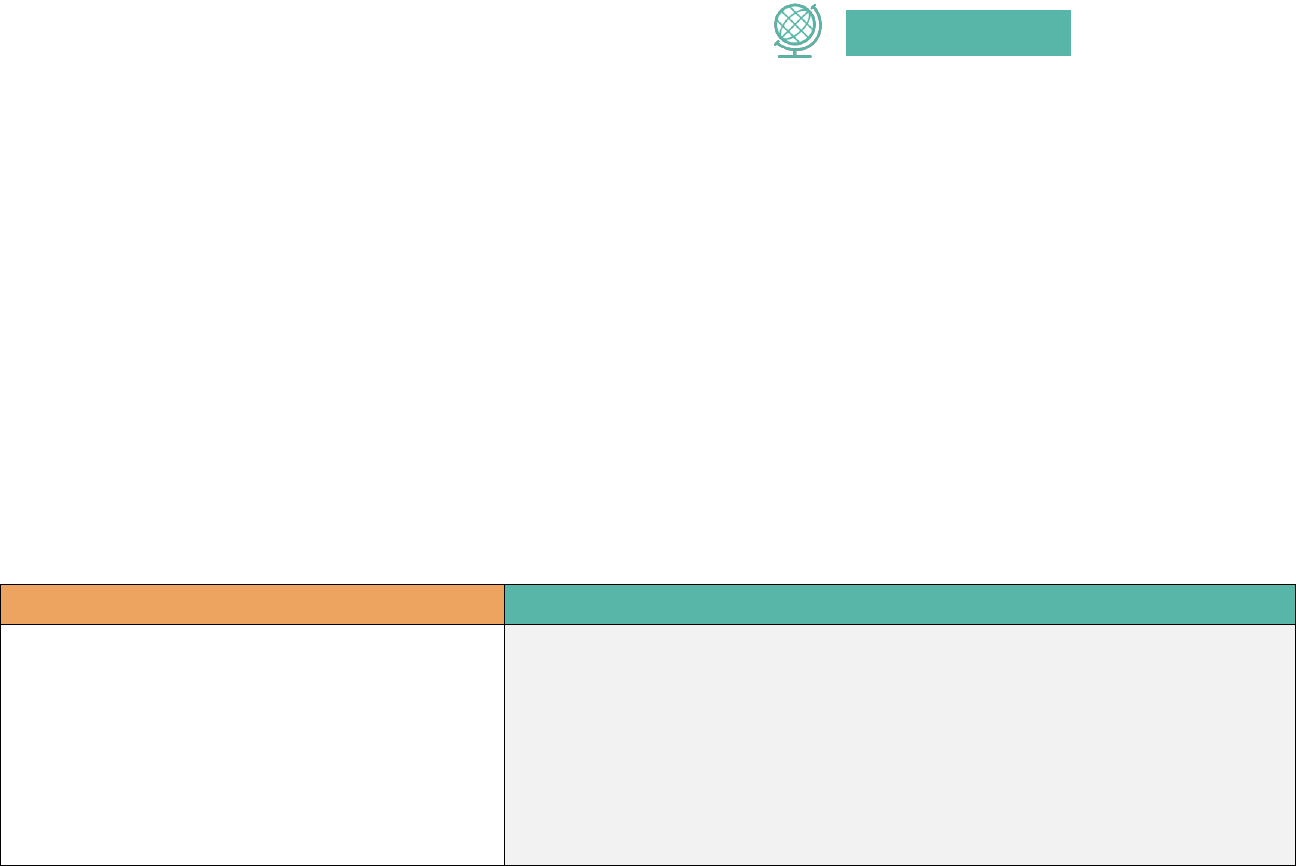
KINDERGARTEN
SOCIAL STUDIES
Mississippi Department of Education | Social Studies – Kindergarten IPG | 2024 17
SUGGESTED
INSTRUCTIONAL
PLANNING GUIDE
for Mississippi College and Career Readiness Standards for Social Studies
CIVICS
Standard K.CI.3: Differentiate the roles and responsibilities of authority figures and leaders.
Objectives
Vocabulary
1. Relate how leaders can be authority figures.
2. Describe the responsibilities of authority
figures and leaders.
3. Identify authority figures and leaders at
home, school, and in the community.
• Leader
• Responsibility
• Respect
• Decision-making
• Community
• Role model
• Influence
• Power
• Duty
• Accountability
• Trustworthiness
• Obedience
• Delegation
• Authority Figure
• Service

KINDERGARTEN
SOCIAL STUDIES
Mississippi Department of Education | Social Studies – Kindergarten IPG | 2024 18
Learning Activities (Civics: Standard K.CI.3)
Relate how leaders can be authority figures:
• Read a story about a famous leader or authority figure, such as Dr. Martin Luther King Jr. or a firefighter, and discuss how
they have made a positive impact.
• Play a game of "Simon Says" where students follow the directions of the leader to practice listening and following
instructions.
Describe the responsibilities of authority figures and leaders:
• Brainstorm a list of responsibilities that authority figures and leaders might have, such as keeping people safe or making
important decisions.
• Create a chart or poster of different authority figures and leaders and the responsibilities that come with their roles.
Identify authority figures and leaders at home, school, and in the community:
• Create a collage or drawing of different authority figures they see in their daily lives, such as parents, teachers, and police
officers.
• Go on a community walk and identify and take pictures of authority figures students see, such as crossing guards or
librarians.

KINDERGARTEN
SOCIAL STUDIES
Mississippi Department of Education | Social Studies – Kindergarten IPG | 2024 19
Real World Connections (Civics: Standard K.CI.3)
Relate how leaders can be authority figures:
• Connect with a local community leader, such as a mayor or city council member, and have them speak to the class about
their role and how they serve the community.
• Interview a leader students’ know, such as a parent or grandparent, and ask them about their experiences in leadership
roles.
Describe the responsibilities of authority figures and leaders:
• Visit a local fire station or police department and talk to the firefighters or police officers about their jobs and
responsibilities.
• Invite a school administrator or teacher leader to talk to the class about their role in maintaining a safe and productive
learning environment.
Identify authority figures and leaders at home, school, and in the community:
• Take a field trip to a local government building or community center and identify the different authority figures and
leaders they see.
• Interview different authority figures they know and ask them about their experiences in their roles.

KINDERGARTEN
SOCIAL STUDIES
Mississippi Department of Education | Social Studies – Kindergarten IPG | 2024 20
Differentiation (Civics: Standard K.CI.3)
Relate how leaders can be authority figures:
• Use picture books or videos to introduce the concept of authority figures and leaders before moving on to more complex
discussions.
• Research different leaders throughout history and present their findings to the class.
Describe the responsibilities of authority figures and leaders:
• Use visual aids such as graphic organizers to help students understand the different responsibilities of authority figures and
leaders.
• Students could role-play different leadership scenarios and demonstrate their understanding of the responsibilities involved.
Identify authority figures and leaders at home, school, and in the community:
• Provide students with visual aids such as pictures or flashcards to help students identify different authority figures and
leaders.
• Research different leadership positions within a specific community or organization and present their findings to the class.

KINDERGARTEN
SOCIAL STUDIES
Mississippi Department of Education | Social Studies – Kindergarten IPG | 2024 21
SUGGESTED
INSTRUCTIONAL
PLANNING GUIDE
for Mississippi College and Career Readiness Standards for Social Studies
ECONOMICS
Standard K.E.1: Analyze how money is earned and used.
Objectives
Vocabulary
1. Identify different types of jobs and describe
their work.
2. Explain that money is earned through work.
3. Recognize monetary units.
4. Distinguish saving from spending.
5. Illustrate how money is used in daily life.
•
Occupation
•
Career
•
Job
•
Work
•
Responsibility
•
Service
•
Earning
•
Income
•
Salary
•
Wages
•
Paycheck
•
Penny
•
Nickel
•
Dime
•
Quarter
•
Dollar
•
Cent
•
Saving
•
Spending
•
Budget
•
Expense
•
Saving Account
•
Piggy Bank
•
Purchase
•
Transaction
•
Consumer
•
Merchant
•
Price
•
Change

KINDERGARTEN
SOCIAL STUDIES
Mississippi Department of Education | Social Studies – Kindergarten IPG | 2024 22
Learning Activities (Economics: Standard K.E.1)
Identify different types of jobs and describe their work:
• Invite guest speakers from different occupations to talk to the class and answer questions.
• Draw pictures or create posters about different occupations and share them with the class.
• Read books about different jobs and have students discuss the roles and responsibilities of the workers.
Explain that money is earned through work:
• Have students participate in a classroom job system and earn "classroom currency" for their work.
• Create a pretend store or restaurant in the classroom where students can earn and spend "play money".
• Role-play different job scenarios and discuss how people earn money from their work.
Recognize monetary units:
• Play money games where students identify different types of coins and their values.
• Use real coins to practice counting money and making changes.
• Create "price tags" for classroom objects and have students "purchase" them using play money.
Distinguish saving from spending:
• Discuss the difference between wants and needs and have students create a budget for a pretend shopping trip.
• Play games where students practice making choices between spending and saving their money.
• Read books about saving and have students create their own "savings plans" for future goals.
Illustrate how money is used in daily life:
• Create a classroom "grocery store" and practice purchasing items with play money.
• Discuss the concept of supply and demand and how it affects prices in the real world.
• Explore the different ways people use money (e.g. paying bills, donating to charity) and share their thoughts and
experiences.

KINDERGARTEN
SOCIAL STUDIES
Mississippi Department of Education | Social Studies – Kindergarten IPG | 2024 23
Real World Connections (Economics: Standard K.E.1)
Identify different types of jobs and describe their work:
• Take a field trip to a local business or workplace where students can see different jobs in action.
• Invite parents or community members to talk to the class about their jobs.
• Discuss the various jobs that family members or friends have and how they contribute to the community.
Explain that money is earned through work:
• Discuss with students the various ways people earn money, including through different types of jobs.
• Talk about how people use money to pay for the things they need and want in life.
• Explain that earning money requires hard work and effort, and discuss the importance of perseverance and dedication.
Recognize monetary units:
• Bring in coins and bills from home to share with the class.
• Discuss the different values of coins and bills and how they are used in everyday life.
• Visit a local bank or credit union to learn more about the different types of currency and how they are used.
Distinguish saving from spending:
• Discuss the concept of budgeting and how people make choices about what to spend their money on.
• Talk about the importance of saving money for future goals, such as buying a house or going to college.
• Encourage students to save a portion of their classroom currency or allowance to practice the habit of saving.
Illustrate how money is used in daily life:
• Create a list of things they need and want and discuss how money is used to purchase these items.
• Talk about the importance of being responsible with money and making wise financial decisions.
• Encourage students to think about how they can use their money to help others, such as donating to a charity or helping
someone in need.

KINDERGARTEN
SOCIAL STUDIES
Mississippi Department of Education | Social Studies – Kindergarten IPG | 2024 24
Differentiation (Economics: Standard K.E.1)
Identify different types of jobs and describe their work:
• Provide picture cards of different jobs and match the pictures to their descriptions.
• Challenge students to research a specific job and create a presentation to share with the class.
Explain that money is earned through work:
• Provide simplified examples of how people earn money, such as doing chores or selling lemonade.
• Research different types of jobs and the salaries they typically earn.
Recognize monetary units:
• Provide hands-on manipulatives, such as play money, to help students visualize the different values of coins and bills.
• Practice converting different currency values, such as from dollars to euros or yen.
Distinguish saving from spending:
• Provide visual aids to help students understand the concept of saving, such as a piggy bank or a savings chart.
• Create a budget for students and track their expenses to see how much they can save.
Illustrate how money is used in daily life:
• Provide concrete examples of how money is used in their daily lives, such as buying food or paying for transportation.
• Research and compare the costs of different items, such as groceries or electronics, to learn about responsible spending.

KINDERGARTEN
SOCIAL STUDIES
Mississippi Department of Education | Social Studies – Kindergarten IPG | 2024 25
SUGGESTED
INSTRUCTIONAL
PLANNING GUIDE
for Mississippi College and Career Readiness Standards for Social Studies
ECONOMICS
Standard K.E.2: Distinguish goods from services.
Objectives
Vocabulary
1. Define goods and services.
2. Identify and classify examples of goods and services.
3. Explain how goods and services are obtained.
•
Goods
•
Services
•
Consumer
•
Producer
•
Needs
•
Wants
•
Market
•
Trade
•
Cost
•
Supply
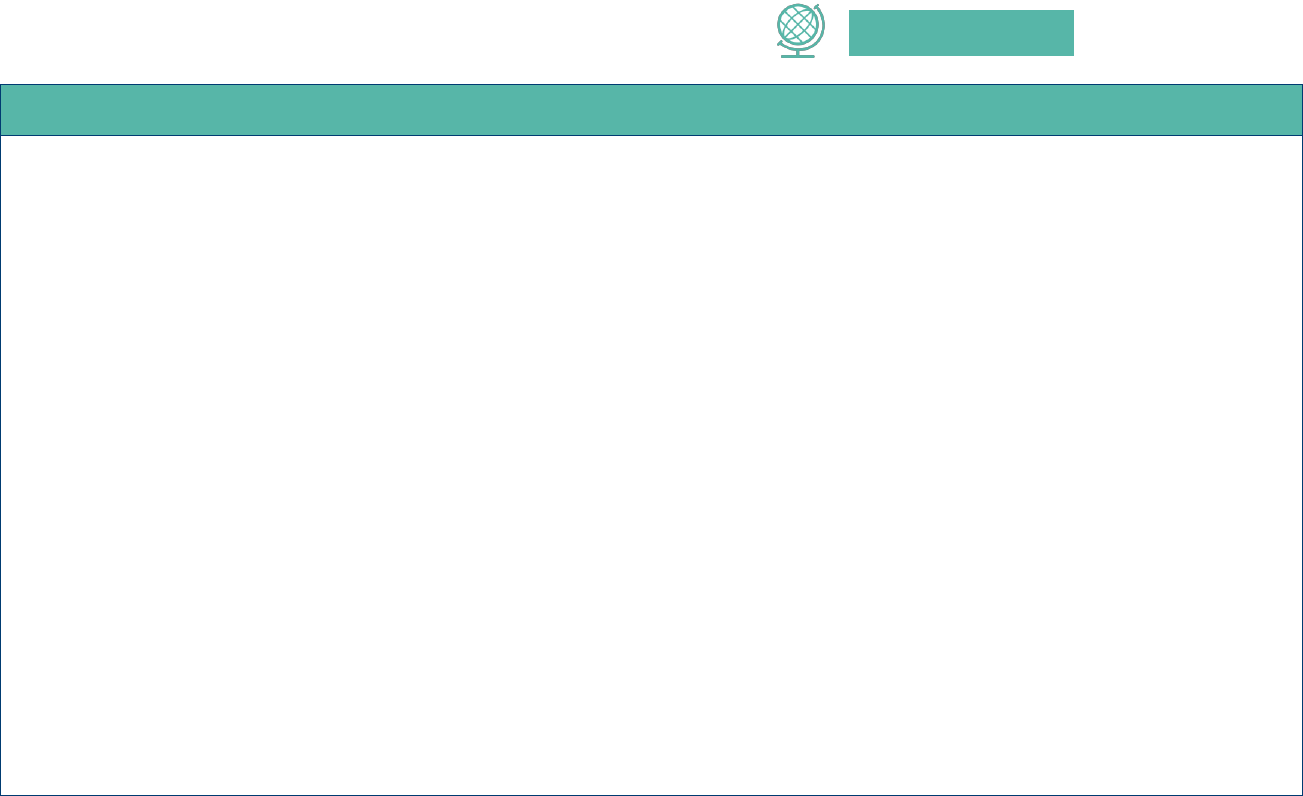
KINDERGARTEN
SOCIAL STUDIES
Mississippi Department of Education | Social Studies – Kindergarten IPG | 2024 26
Learning Activities (Economics: Standard K.E.2)
• Goods and Services Sort: Students work in small groups to sort pictures of goods and services into two categories.
They can discuss and explain their reasoning for each item they sort.
• Goods and Services Scavenger Hunt: Students go on a scavenger hunt around the classroom or school to identify and
classify examples of goods and services. They can document their findings on a worksheet or in a digital format.
• Show and Tell: Students bring in an item from home to share with the class. They must explain if the item is a good or a
service and how it is obtained.
• Classroom Market: Students create a classroom market where they can "buy" and "sell" goods and services with play
money. This allows students to practice identifying and obtaining goods and services in a hands-on way.
• Needs vs. Wants Chart: Students create a chart that lists examples of needs and wants. They can then discuss and reflect
on the differences between the two categories.
• Community Helpers Interviews: Students interview community helpers such as police officers, firefighters, and doctors to
learn about the goods and services they provide. They can share their findings with the class.

KINDERGARTEN
SOCIAL STUDIES
Mississippi Department of Education | Social Studies – Kindergarten IPG | 2024 27
Real World Connections (Economics: Standard K.E.2)
• Visit a Local Store: Students can visit a local store and observe the different goods and services that are available. They can talk
to employees about how they obtain and sell those goods and services.
• Guest Speakers: Invite guest speakers such as a baker, a hairdresser, or a mail carrier to come and talk to the students about
their job and the goods and services they provide.
• Field Trip to a Local Business: Take the class on a field trip to a local business such as a farm, factory, or restaurant. Students can
observe how goods and services are produced and learn about the jobs involved.
• Community Service Project: Plan a community service project where students can provide a service to others such as collecting
and donating goods to a local shelter or nursing home.
• Household Chores: Encourage students to help with household chores such as grocery shopping or cleaning. They can learn
about the goods and services that are needed for daily life.
• Saving and Spending: Discuss with students the importance of saving and spending money wisely. They can learn about
different ways to save money and make informed decisions about how to spend it.

KINDERGARTEN
SOCIAL STUDIES
Mississippi Department of Education | Social Studies – Kindergarten IPG | 2024 28
Differentiation (Economics: Standard K.E.2)
For students who need more support:
• Use visual aids, such as pictures and videos, to help students understand the concepts of goods and services.
• Provide concrete examples of goods and services that are familiar to the students, such as toys and haircuts.
• Use simple sentence structures and repeat key vocabulary words throughout the lesson.
For students who are ready for a challenge:
• Ask students to research and identify examples of goods and services in their community.
• Encourage students to think critically about the difference between essential and non-essential goods and services.
• Create their own goods or services and present them to the class.
For students with different learning styles:
• Use hands-on activities, such as sorting games or role-playing scenarios, to help students understand the concept of
goods and services.
• Provide written or audio resources for students who prefer to learn independently.
• Encourage students to work in small groups or pairs to discuss and share their understanding of goods and services.

KINDERGARTEN
SOCIAL STUDIES
Mississippi Department of Education | Social Studies – Kindergarten IPG | 2024 29
SUGGESTED
INSTRUCTIONAL
PLANNING GUIDE
for Mississippi College and Career Readiness Standards for Social Studies
ECONOMICS
Standard K.E.3: Differentiate needs from wants.
Objectives
Vocabulary
1. Define needs and wants.
2. Classify items as needs or wants.
3. Compare and contrast needs and wants.
•
Needs
•
Wants
•
Goods
•
Services
•
Basic Needs

KINDERGARTEN
SOCIAL STUDIES
Mississippi Department of Education | Social Studies – Kindergarten IPG | 2024 30
Learning Activities (Economics: Standard K.E.3)
• Needs vs. Wants Sort: Provide students with pictures or objects representing various items and have them sort them into
categories of "needs" and "wants". Discuss why certain items are considered needs and others are wants.
• Basic Needs Collage: Create a collage using pictures from magazines or newspapers to show examples of items that fulfill
basic needs (food, water, clothing, shelter). Discuss how these items are necessary for survival.
• Wants vs. Needs Venn Diagram: Provide students with a Venn diagram and fill it in with items that are wanting, needs, or
both. Discuss the similarities and differences between the two categories.
• Needs vs. Wants Writing Prompt: Write a short paragraph or story about a time when they had to choose between a need
and a want. Discuss the outcome of their decision and what they learned from the experience.
• Needs vs. Wants Scavenger Hunt: Provide students with a list of items and search for examples of needs and wants in the
classroom or around the school. Discuss why certain items are classified as needs or wants.
• Needs vs. Wants Role Play: Have students act out scenarios in which they have to choose between a need and a want.
Discuss the outcome of their decision and what they learned from the experience.
• Needs vs. Wants Interview: Interview a family member or friend about their own needs and wants. Discuss similarities and
differences between their own needs and wants and those of others.
• Basic Needs Song: Create a song or chant about basic needs and perform it for the class. Discuss why these items are
important and necessary for survival.

KINDERGARTEN
SOCIAL STUDIES
Mississippi Department of Education | Social Studies – Kindergarten IPG | 2024 31
Real World Connections (Economics: Standard K.E.3)
• Visit a Local Store: Students can visit a local store and observe the different goods and services that are available. They can
talk to employees about how they obtain and sell those goods and services.
• Guest Speakers: Invite guest speakers such as a baker, a hairdresser, or a mail carrier to come and talk to the students
about their job and the goods and services they provide.
• Field Trip to a Local Business: Take the class on a field trip to a local business such as a farm, factory, or restaurant.
Students can observe how goods and services are produced and learn about the jobs involved.
• Community Service Project: Plan a community service project where students can provide a service to others such as
collecting and donating goods to a local shelter or nursing home.
• Household Chores: Encourage students to help with household chores such as grocery shopping or cleaning. They can
learn about the goods and services that are needed for daily life.
• Saving and Spending: Discuss with students the importance of saving and spending money wisely. They can learn about
different ways to save money and make informed decisions about how to spend it.

KINDERGARTEN
SOCIAL STUDIES
Mississippi Department of Education | Social Studies – Kindergarten IPG | 2024 32
Differentiation (Economics: Standard K.E.3)
• Needs and wants can be observed in our daily lives. For example, food, water, and shelter are needs, while toys,
games, and sweets are wants.
• Supermarkets and grocery stores can be used to show students how to differentiate between needs and wants.
Teachers can take students on a tour of the store and ask students to identify items that are needs and wants.
• Discussions with parents or family members about budgeting and spending can also provide real-world connections
to the concepts of needs and wants.

KINDERGARTEN
SOCIAL STUDIES
Mississippi Department of Education | Social Studies – Kindergarten IPG | 2024 33
SUGGESTED
INSTRUCTIONAL
PLANNING GUIDE
for Mississippi College and Career Readiness Standards for Social Studies
CIVIL RIGHTS
Standard K.CR.1: Explore the similarities and differences between individuals and families.
Objectives
Vocabulary
1. Define similarity and difference.
2. Identify examples of similarities and differences.
3. Explain the importance of both similarities and differences to individuals, families, and
communities.
•
Similarity
•
Difference
•
Compare
•
Contrast
•
Community
•
Individual
•
Family
•
Diversity
•
Culture
•
Identity
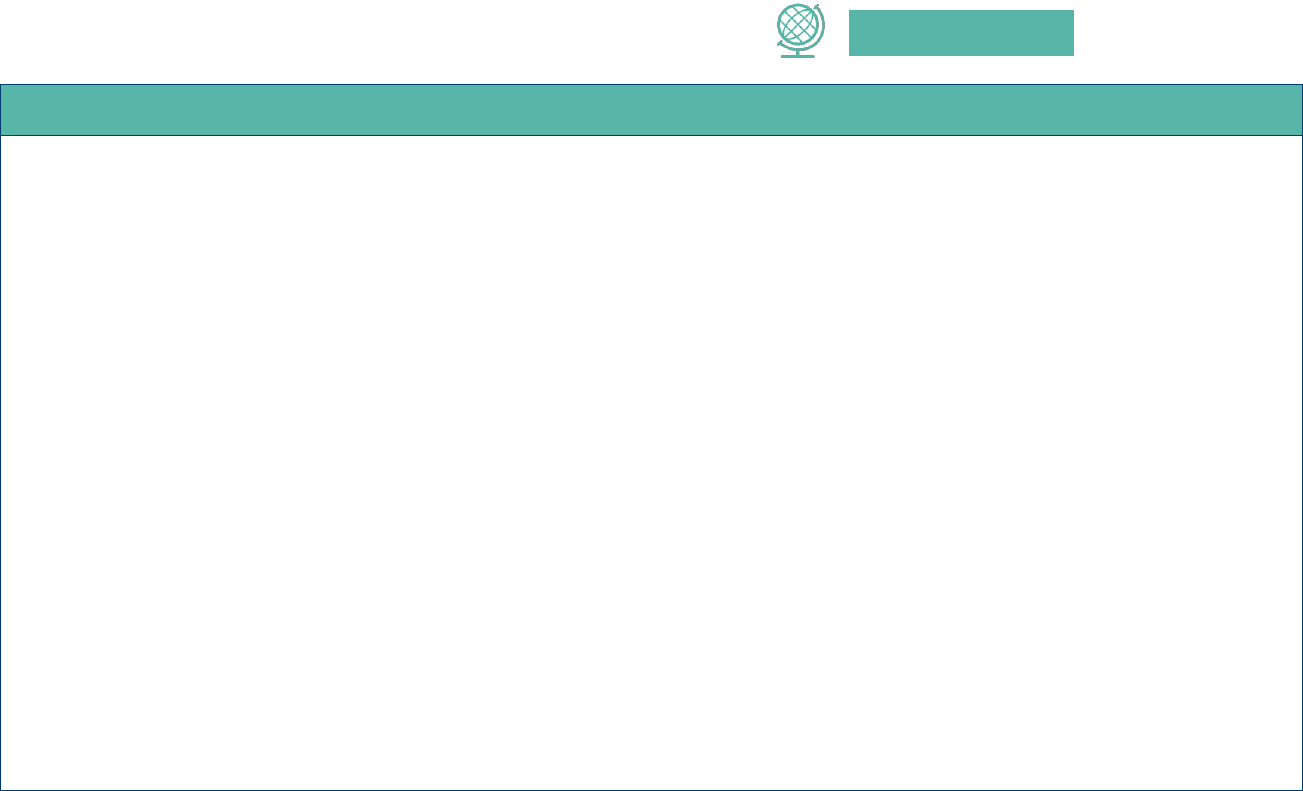
KINDERGARTEN
SOCIAL STUDIES
Mississippi Department of Education | Social Studies – Kindergarten IPG | 2024 34
Learning Activities (Civil Rights: Standard K.CR.1)
• Interview family members or friends from different cultures to identify similarities and differences in their daily lives.
• Take a field trip to a local museum or cultural center to explore different traditions and customs from around the world.
• Have students bring in photographs or items from their own homes and encourage students to share how their family
celebrates holidays, traditions, and other cultural events.
• Create a classroom "culture quilt" by having each student create a square that represents their cultural background, then
piecing them together to form a larger quilt. Discuss how the different squares are both similar and different.
• Read books or watch videos about different cultures and discuss the similarities and differences in family structures, food,
clothing, and celebrations.
• Bring in guest speakers from different cultural backgrounds to share their experiences and traditions with the class.
• Explore similarities and differences in animals through books, videos, and hands-on activities like sorting and classifying.
• Encourage students to find and bring in objects or artifacts from home that represent their cultural heritage, and share
with the class how the item is important to their family or community.

KINDERGARTEN
SOCIAL STUDIES
Mississippi Department of Education | Social Studies – Kindergarten IPG | 2024 35
Real World Connections (Civil Rights: Standard K.CR.1)
• Visit a local cultural festival or celebration and observe the similarities and differences in food, dress, and traditions.
• Watch a documentary or movie that explores cultural diversity and discuss the similarities and differences between
the culture depicted and your own.
• Visit a museum that focuses on the history and culture of different groups of people and discuss the similarities and
differences you observe in their art, artifacts, and customs.
• Interview someone from a different culture or background and ask them about their traditions and customs and
compare and contrast them with your own.
• Attend a community event that celebrates diversity and observe the similarities and differences in the people and
activities present.
• Read books and stories that highlight diversity and explore the similarities and differences between the characters
and their backgrounds.
• Take a virtual field trip to different parts of the world using online resources and discuss the similarities and
differences in the landscapes, climates, and cultures.
• Participate in a cultural exchange program or pen pal program with a school or community from a different part of
the world and explore the similarities and differences in your daily lives and traditions.

KINDERGARTEN
SOCIAL STUDIES
Mississippi Department of Education | Social Studies – Kindergarten IPG | 2024 36
Differentiation (Civil Rights: Standard K.CR.1)
Define similarity and difference:
• Provide visual aids like pictures or objects to help students understand the concept of similarity and difference.
• Use videos or songs to engage students and introduce the concept in an interactive and fun way.
• Allow students to work in small groups and discuss examples of similarities and differences.
Identify examples of similarities and differences:
• Provide differentiated examples based on students' interests and backgrounds.
• Use graphic organizers like Venn diagrams or T-charts to help students organize their thoughts and compare and
contrast different objects or ideas.
• Use hands-on activities like sorting games or puzzles to reinforce the concept of similarities and differences.
Explain the importance of both similarities and differences to individuals, families, and communities:
• Use real-world examples of how similarities and differences impact individuals, families, and communities, such as
celebrating cultural diversity in the community or working together with people who have different abilities.
• Use picture books or stories to help students understand how embracing similarities and differences can help build a
positive and inclusive community.
• Provide opportunities for students to share their own experiences and perspectives on how similarities and
differences impact their lives.
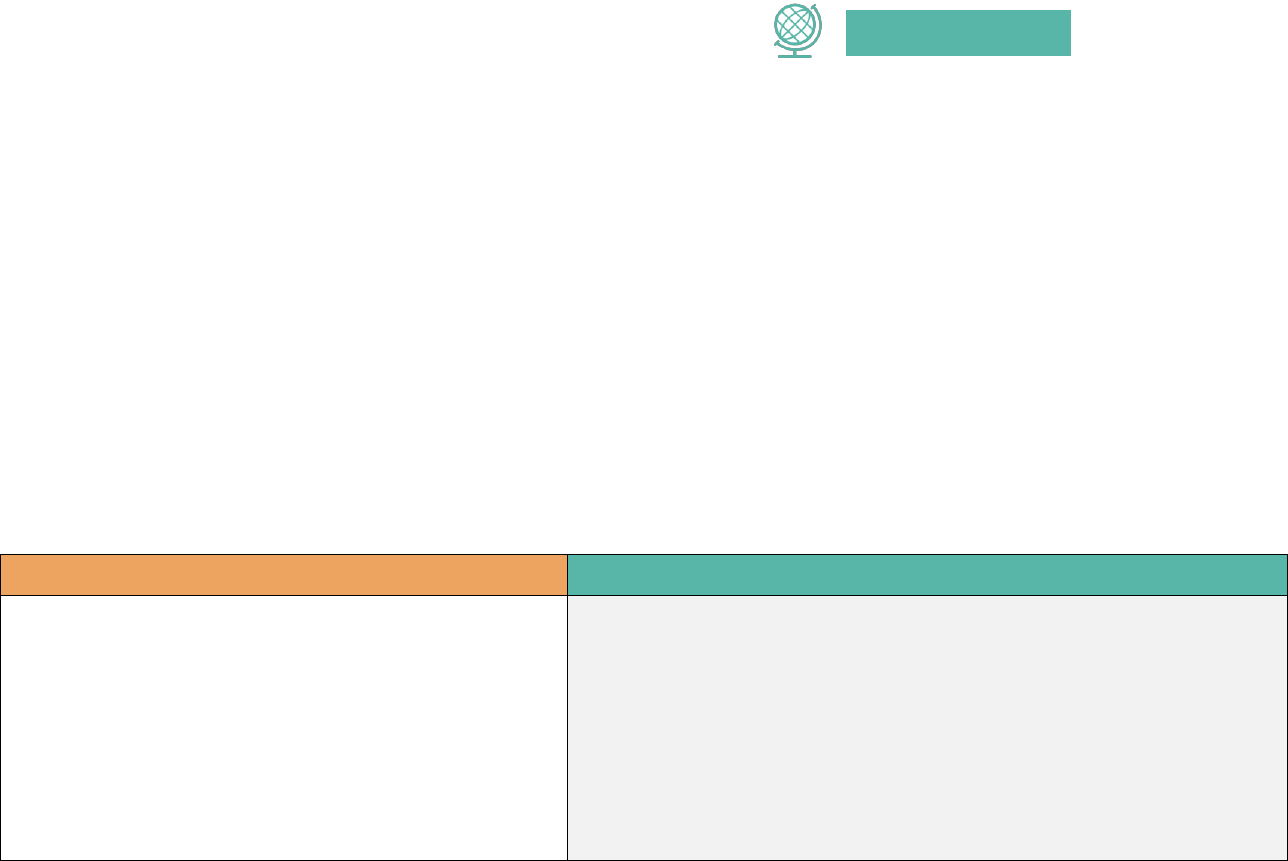
KINDERGARTEN
SOCIAL STUDIES
Mississippi Department of Education | Social Studies – Kindergarten IPG | 2024 37
SUGGESTED
INSTRUCTIONAL
PLANNING GUIDE
for Mississippi College and Career Readiness Standards for Social Studies
CIVIL RIGHTS
Standard K.CR.2: Examine diversity in the classroom.
Objectives
Vocabulary
1. Define similarity and difference.
2. Identify examples of similarities and differences.
3. Explain the importance of both similarities and
differences to individuals, families, and
communities.
•
Unity
•
Diversity
•
Cultural Diversity
•
Ethnic Diversity
•
Inclusion
•
Empathy
•
Respect
•
Tolerance
•
Collaboration
•
Multiculturalism

KINDERGARTEN
SOCIAL STUDIES
Mississippi Department of Education | Social Studies – Kindergarten IPG | 2024 38
Learning Activities (Civil Rights: Standard K.CR.2)
• Unity and Diversity Collage: cut out pictures from magazines or print images from online that represent different cultures,
ethnicities, abilities, and backgrounds. Then, have students create a collage that celebrates unity and diversity.
• Diversity Interviews: Pair up students with different backgrounds and have students interview each other about their
cultures, traditions, and experiences. Then, have students share what they learned with the class.
• Cultural Celebrations: Choose a holiday or cultural celebration and have students research the traditions and customs
associated with it. Then, have students share their findings with the class and participate in an activity related to the
celebration.
• Unity Puzzle: Provide students with puzzle pieces of different shapes and colors. Have students work together to create a
unified puzzle that represents their classroom community.
• Appreciating Differences: Read a children's book that celebrates differences and diversity, such as "The Colors of Us" by
Karen Katz or "All Are Welcome" by Alexandra Penfold. Then, have students create their own illustrations or stories that
celebrate diversity.
• Family Traditions: Ask students to share a family tradition or custom that is important to students. Then, have students
create a visual representation of their tradition and share it with the class.
• Diversity Scavenger Hunt: Create a scavenger hunt that encourages students to learn about different cultures, traditions,
and abilities. For example, students may have to find a picture of a famous person from a different country or find an
object that represents a different ability.
• Unity Circle: Have students sit in a circle and share something positive about the person next to them. This activity
encourages students to appreciate and value each other's unique qualities.
• Classroom Community Quilt: Provide students with fabric squares and have students decorate them with a symbol, image,
or message that represents their individuality. Then, sew the squares together to create a classroom community quilt that
celebrates diversity and unity.

KINDERGARTEN
SOCIAL STUDIES
Mississippi Department of Education | Social Studies – Kindergarten IPG | 2024 39
Real World Connections (Civil Rights: Standard K.CR.2)
Unity and diversity:
• Visit a community center or cultural museum that celebrates diversity and promotes unity.
• Attend a cultural festival or parade.
• Read books or watch movies that depict diverse characters and cultures.
Types of diversity in the classroom:
• Invite guest speakers from different cultural backgrounds to share their experiences with the class.
• Host a cultural fair where students can share their heritage and traditions.
Encouraging unity and appreciating diversity:
• Create a classroom mural that celebrates diversity and promotes unity.
• Engage in classroom discussions about different cultures and backgrounds.
• Encourage students to share their own traditions and beliefs with the class.

KINDERGARTEN
SOCIAL STUDIES
Mississippi Department of Education | Social Studies – Kindergarten IPG | 2024 40
Differentiation (Civil Rights: Standard K.CR.2)
Define unity and diversity:
• Use pictures and examples to help students understand the concept of unity and diversity.
• Challenge students to come up with their own definitions and examples of unity and diversity.
Identify types of diversity in the classroom:
• Provide visual aids like pictures and videos to help students identify different types of diversity.
• Encourage students to research and present on different types of diversity beyond what is present in the classroom.
Propose ways to encourage unity and appreciate diversity:
• Provide a list of suggestions and have students choose from the options provided.
• Challenge students to come up with their own creative ideas for encouraging unity and appreciating diversity.
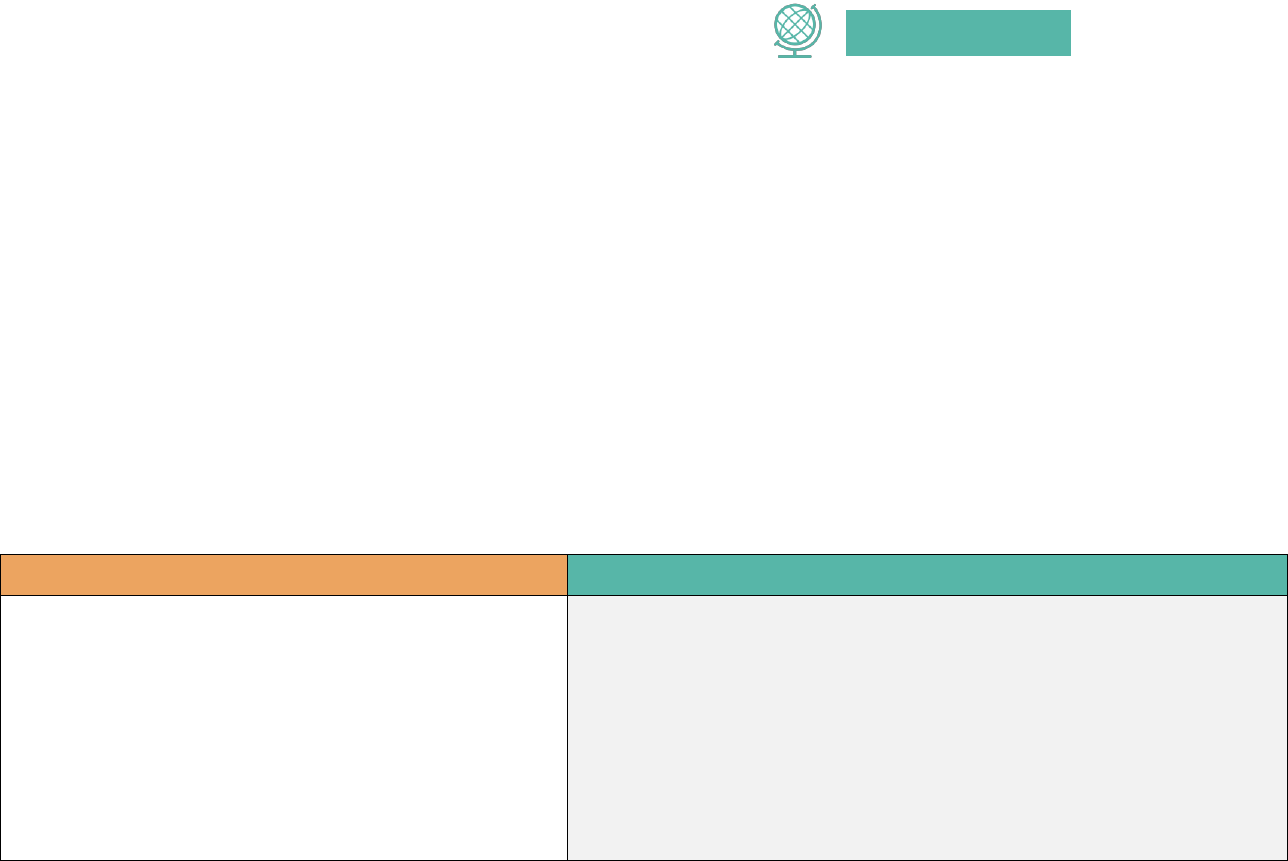
KINDERGARTEN
SOCIAL STUDIES
Mississippi Department of Education | Social Studies – Kindergarten IPG | 2024 41
SUGGESTED
INSTRUCTIONAL
PLANNING GUIDE
for Mississippi College and Career Readiness Standards for Social Studies
CIVIL RIGHTS
Standard K.CR.3: Examine diversity in the classroom.
Objectives
Vocabulary
1. Define similarity and difference.
2. Identify examples of similarities and differences.
3. Explain the importance of both similarities and
differences to individuals, families, and
communities.
•
Customs
•
Traditions
•
Celebrations
•
Literature
•
Language
•
Games
•
Song
•
Dance
•
Role
•
School
•
Home

KINDERGARTEN
SOCIAL STUDIES
Mississippi Department of Education | Social Studies – Kindergarten IPG | 2024 42
Learning Activities (Civil Rights: Standard K.CR.3)
• Family tradition sharing: Have students interview their family members about a specific tradition, such as a holiday
celebration or a special meal, and then share with the class. Students can create a poster or a digital presentation to
highlight their family's traditions.
• Classroom celebration planning: As a class, brainstorm and plan a celebration or event that incorporates different cultural
traditions or customs. This could include a multicultural food fair, a dance or music performance, or a storytelling session.
• Compare and contrast activity: Create a Venn diagram or a T-chart to compare and contrast a school tradition or
celebration with a family tradition or celebration. Students can also write a short paragraph about the similarities and
differences they identified.
• Cultural artifact showcase: Have students bring in an artifact or object from their culture or family tradition to share with
the class. This could include a family recipe, a piece of clothing, a musical instrument, or a book in their native language.
• Storytelling circle: Have students take turns sharing a story about a family tradition or celebration. This could be done in a
circle or during a designated sharing time. Students can also create illustrations to accompany their stories.
• Classroom customs and rules: Have students discuss and create a list of customs or rules that are important in their
classroom, such as showing respect to classmates or following directions from the teacher. Students can create posters or
drawings to represent these customs or rules.
• Guest speaker series: Invite guest speakers from different cultures or backgrounds to come speak to the class about their
traditions or customs. This could include parents, community members, or local cultural organizations.
• Cultural exploration centers: Create different centers in the classroom where students can explore and learn about
different cultures and customs. This could include a food-tasting station, a music and dance area, or a craft-making station.

KINDERGARTEN
SOCIAL STUDIES
Mississippi Department of Education | Social Studies – Kindergarten IPG | 2024 43
Real World Connections (Civil Rights: Standard K.CR.3)
• Invite family members to come and share their customs, traditions, and celebrations with the class.
• Discuss different customs and traditions that are celebrated at school and how they bring the community together.
• Create a Venn diagram to compare and contrast the customs and traditions celebrated at school and home.
• Create a class cookbook featuring recipes from different cultures.
• Visit a local cultural festival or event to learn about different customs and traditions.
• Interview family members or community members about their customs and traditions.
• Read multicultural literature and discuss the different customs and traditions portrayed in the books.
• Create a class mural that depicts the customs and traditions celebrated by different families in the class.
• Take a field trip to a cultural center or museum to learn about different customs and traditions.
• Have a multicultural day where students and families can share their customs and traditions with the class.

KINDERGARTEN
SOCIAL STUDIES
Mississippi Department of Education | Social Studies – Kindergarten IPG | 2024 44
Differentiation (Civil Rights: Standard K.CR.3)
Describe family customs, traditions, and celebrations held by members of the class and their families (e.g., literature,
language, games, songs, dances, etc.):
• Provide pictures or visual aids of different cultural traditions and celebrations and have students match them with their
corresponding descriptions.
• Have students research and present on a family tradition or celebration that is unique to their culture or background.
Describe the role that customs, traditions, and celebrations play at school:
• Prompt students to talk about their own experiences with school celebrations, such as "What was your favorite school
celebration and why?"
• Analyze the cultural significance and history behind a specific school celebration.
Compare and contrast school customs, traditions, and celebrations with those of home and family:
• Provide a Venn diagram or graphic organizer to help students organize their thoughts and compare/contrast different
customs and traditions.
• Conduct interviews with classmates and family members to gather more in-depth information about the different
customs and traditions. Students can then create a presentation or report to share their findings.

KINDERGARTEN
SOCIAL STUDIES
Mississippi Department of Education | Social Studies – Kindergarten IPG | 2024 45
SUGGESTED
INSTRUCTIONAL
PLANNING GUIDE
for Mississippi College and Career Readiness Standards for Social Studies
GEOGRAPHY
Standard K.G.1: Establish an individual sense of place.
Objectives
Vocabulary
1. Illustrate and label a map of familiar places.
2. Identify elements of a physical address.
3. Explain a place using terms related to location,
direction, size, and distance (e.g., up, down, left,
right, far, near, etc.).
4. Examine routes and modes of transportation
between home and school.
•
Map
•
Physical address
•
Location
•
Direction
•
Size
•
Distance
•
Up
•
Down
•
Left
•
Right
•
Far
•
Near
•
Route
•
Mode of Transportation
•
Home
•
School

KINDERGARTEN
SOCIAL STUDIES
Mississippi Department of Education | Social Studies – Kindergarten IPG | 2024 46
Learning Activities (Geography: Standard K.G.1)
• Map Making: Have students draw a map of their classroom or their neighborhood, labeling important landmarks
and places.
• Address Practice: Provide students with practice sheets where they can practice writing their own addresses and
identifying the street name, house number, city, and state.
• Direction Game: Create a game where students are given a series of directions and must use terms like up, down,
left, and right to navigate a maze or find an object in the classroom.
• Transportation Study: Have students research and present different modes of transportation that they use to get to
school or that are commonly used in their community. This can include cars, buses, bikes, or even walking.
• Scavenger Hunt: Create a scavenger hunt where students must follow a set of clues to find different landmarks or
places in their community, practicing their map reading and direction skills.
• Measuring Distance: Provide students with a measuring tape or ruler and have students practice measuring the
distance between different objects in the classroom or on a map.
• Field Trip Planning: Plan a field trip with the class and have students research the best route to get there, including
different modes of transportation and estimated travel time.
• Virtual Tour: Take a virtual tour of a famous landmark or city, using online maps and resources to explore different
locations and practice map reading skills.
• School Map: Take your class to the bathroom, cafeteria, library, another classroom, parking lot, etc. As you walk
throughout the school, describe the directions in this fashion “We are walking down the hall. We are going to make
a right on this hall, etc.”
• Show and Tell: Identify objects within your classroom. Ask the class to identify its location with “up, down, left,
right, near, far, etc.”

KINDERGARTEN
SOCIAL STUDIES
Mississippi Department of Education | Social Studies – Kindergarten IPG | 2024 47
Real World Connections (Geography: Standard K.G.1)
• Have students bring in or draw pictures of maps of places they are familiar with, such as their neighborhood or a park they
like to visit. Encourage students to label the different landmarks and features they see.
• Show students examples of physical addresses, such as from a phone book or online directory. Have students practice
identifying the different parts of an address, such as the street name, house number, city, and state.
• Take students on a walk around the school or neighborhood and ask students to describe their surroundings using location
and direction words. For example, "The tree is to the left of the mailbox" or "The store is across the street from the park."
• Ask students to think about how they get to school and have students draw a picture or make a list of the different modes
of transportation they might use (e.g., walking, biking, car, bus). Discuss the benefits and drawbacks of each mode, such as
speed, safety, and environmental impact.

KINDERGARTEN
SOCIAL STUDIES
Mississippi Department of Education | Social Studies – Kindergarten IPG | 2024 48
Differentiation (Geography: Standard K.G.1)
Illustrate and label a map of familiar places:
• Provide students with a pre-made map with some labels already filled in, and have students fill in the remaining labels.
• Have students create a 3D model of a familiar place and label the various elements in the model.
Identify elements of a physical address:
• Provide students with a template that has the various elements of a physical address listed, and have students match the
correct element to the corresponding blank space.
• Have students identify the different elements of a physical address in a real-world context, such as by looking at a
package label or a piece of mail.
Explain a place using terms related to location, direction, size, and distance:
• Provide students with visual aids such as pictures or maps to help students understand and use location, direction, size,
and distance words.
• Have students create their own map or diagram of a place, and use location, direction, size, and distance words to
describe the elements on the map or diagram.
Examine routes and modes of transportation between home and school:
• Provide students with a visual aid, such as a map or pictures of various modes of transportation, and have students match
the modes of transportation to the routes between home and school.
• Have students research and create a presentation about alternative modes of transportation, such as biking or walking,
and compare the benefits and drawbacks of each mode of transportation.
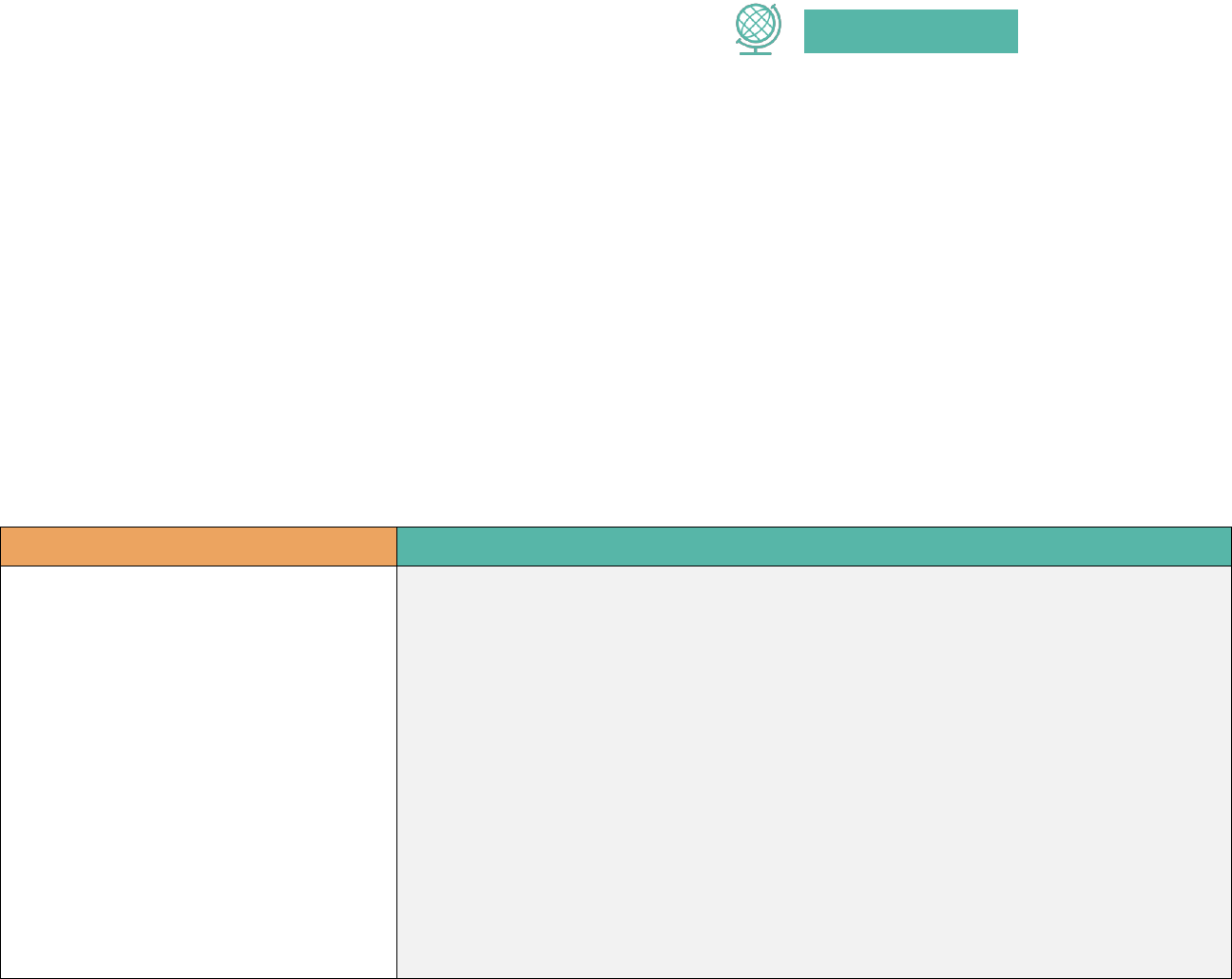
KINDERGARTEN
SOCIAL STUDIES
Mississippi Department of Education | Social Studies – Kindergarten IPG | 2024 49
SUGGESTED
INSTRUCTIONAL
PLANNING GUIDE
for Mississippi College and Career Readiness Standards for Social Studies
GEOGRAPHY
Standard K.G.2: Investigate the physical features of the environment.
Objectives
Vocabulary
1. Differentiate landforms from
bodies of water.
2. Define physical features and
analyze how the physical
features of the Earth impact the
way of life in various places.
3. Define and describe the way
physical environments may
change over time (e.g., flooding,
tornadoes, hurricanes, etc.).
•
Mountain
•
Valley
•
Hill
•
Plateau
•
Peninsula
•
Island
•
Ocean
•
Sea
•
Lake
•
River
•
Stream
•
Waterfall
•
Delta
•
Coast
•
Beach
•
Bay
•
Gulf
•
Strait
•
Canal
•
Glacier
•
Climate
•
Vegetation
•
Topography
•
Natural Resources
•
Ecosystem
•
Biomes
•
Weather
•
Erosion
•
Deposition
•
Flooding
•
Erosion
•
Landslides
•
Drought
•
Earthquakes
•
Volcanic
Eruptions
•
Wildfires
•
Tornadoes
•
Hurricanes
•
Tsunamis
•
Blizzards
•
Avalanches
•
Mudslide

KINDERGARTEN
SOCIAL STUDIES
Mississippi Department of Education | Social Studies – Kindergarten IPG | 2024 50
Learning Activities (Geography: Standard K.G.2)
Differentiate landforms from bodies of water:
• Take students on a nature walk to identify different types of landforms and bodies of water in their local environment.
• Have students create models or drawings of different landforms and bodies of water.
• Play a game of "Landform or Waterform" where students identify pictures or objects as either a landform or body of
water.
Define physical features and analyze how physical features of the Earth impact the way of life in various places:
• Read books from MDE’s Equipped Booklist or watch videos about different physical features of the Earth and discuss how
they impact the way of life in various places.
• Have students research and create presentations on how physical features such as mountains, oceans, or deserts impact
the way of life in different parts of the world.
• Conduct a class discussion or debate on the benefits and drawbacks of living in different physical environments.
Define and describe the way physical environments may change over time (e.g., flooding, tornadoes, hurricanes, etc.):
• Create a unit on weather and natural disasters where students learn about different types of natural disasters and how
they impact the environment.
• Have students create posters or presentations on how to prepare for natural disasters.
• Conduct a hands-on experiment on the effects of erosion or flooding on the land.
Collaborative Processes/Read Aloud/Visual Aids
• Ask students to identify the difference between bodies of water and landform (wet or dry).
• Place students in centers labeled “landforms” or “bodies of water.”
• Read descriptive text aloud while writing key vocabulary on the board and ask the class to identify the correct “landform”
or “bodies of water” centers.
• Identify the physical features of the local town.

KINDERGARTEN
SOCIAL STUDIES
Mississippi Department of Education | Social Studies – Kindergarten IPG | 2024 51
Real World Connections (Geography: Standard K.G.2)
• Differentiate landforms from bodies of water: Students can connect with the real world by observing different landforms
and bodies of water in their surroundings, such as hills, mountains, oceans, rivers, etc. Teachers can take their students on
field trips to nearby parks or natural landmarks to help students identify and differentiate between different landforms
and bodies of water.
• Define physical features and analyze how the physical features of the Earth impact the way of life in various places:
Students can learn about the physical features of different regions of the world and how they impact the way of life of the
people living there. Students can analyze how the availability of water, fertile land, and natural resources in a particular
region affects the way of life of people living there. For example, students can learn about the impact of the Sahara Desert
on the people living in North Africa and the Middle East.
• Define and describe the way physical environments may change over time (e.g., flooding, tornadoes, hurricanes, etc.):
Students can learn about the impact of natural disasters such as floods, hurricanes, and tornadoes on the physical
environment and human life. Students can discuss and analyze how people adapt to and recover from such disasters.
Teachers can invite experts from local disaster management organizations to give talks and share their experiences with
the students. Students can also participate in activities such as creating posters or organizing fundraising events to support
those affected by natural disasters.

KINDERGARTEN
SOCIAL STUDIES
Mississippi Department of Education | Social Studies – Kindergarten IPG | 2024 52
Differentiation (Geography: Standard K.G.2)
Differentiate landforms from bodies of water:
• Visual learners: Show pictures of various landforms and bodies of water and have students identify and categorize
them.
• Kinesthetic learners: Provide sand or clay and have students create different landforms and bodies of water with
their hands.
• Auditory learners: Play audio recordings describing different landforms and bodies of water, and have students
identify them by sound.
Define physical features and analyze how physical features of the Earth impact the way of life in various places:
• Visual learners: Show pictures of different physical features and ask students to identify the ways they impact life
in various places.
• Kinesthetic learners: Set up stations representing different physical features (e.g. a hill, a river, a valley) and have
students move through them to experience how they impact the way of life.
• Auditory learners: Have students listen to stories or interviews from people who live in different physical
environments and ask students to identify the ways the environment impacts their way of life.
Define and describe the way physical environments may change over time (e.g., flooding, tornadoes, hurricanes, etc.):
• Visual learners: Show before and after pictures of environments affected by natural disasters and have students
identify the changes.
• Kinesthetic learners: Use water, sand, or other materials to simulate natural disasters and have students observe
and describe the changes they cause.
• Auditory learners: Play audio recordings of news reports or interviews about natural disasters and have students
describe the changes they hear about.

KINDERGARTEN
SOCIAL STUDIES
Mississippi Department of Education | Social Studies – Kindergarten IPG | 2024 53
SUGGESTED
INSTRUCTIONAL
PLANNING GUIDE
for Mississippi College and Career Readiness Standards for Social Studies
GEOGRAPHY
Standard K.G.3: Recognize representations of the Earth.
Objectives
Vocabulary
1. Discuss various representations of the Earth.
2. Explain that maps and globes help identify the location
and physical features of the Earth.
3. Compare and contrast maps and globes.
4. Identify cardinal directions (e.g., north, south, east, west).
5. Locate the local community, Mississippi, and the United
States using maps and globes.
•
Earth
•
Maps
•
Globes
•
Location
•
Physical Features
•
Cardinal Directions
•
North
•
South
•
East
•
West
•
Community
•
Mississippi
•
United States

KINDERGARTEN
SOCIAL STUDIES
Mississippi Department of Education | Social Studies – Kindergarten IPG | 2024 54
Learning Activities (Geography: Standard K.G.3)
Discuss various representations of the Earth:
• Watch a video or read a book about the different ways the Earth can be represented (e.g., maps, globes, satellite imagery).
• Use art materials to create different representations of the Earth (e.g., drawing, painting, modeling with clay).
• Play a game where students have to match different representations of the Earth (e.g., a matching game with pictures of
maps, globes, and satellite imagery).
Explain that maps and globes help identify the location and physical features of the Earth:
• Use a classroom globe or map to locate different countries, oceans, and landforms.
• Create a scavenger hunt where students have to find and label different physical features on a map or globe.
• Read a book or watch a video about how maps and globes are made and how they are used to navigate.
Compare and contrast maps and globes:
• Use two different maps or globes to compare and contrast physical features and locations.
• Have students create a Venn diagram or T-chart to compare and contrast the two.
• Use a video or interactive activity to show the advantages and disadvantages of each representation.
Identify cardinal directions (e.g., north, south, east, west):
• Play a game where students have to locate objects in the classroom using cardinal directions.
• Create a treasure hunt where students have to follow directions using cardinal directions to find the treasure.
• Use a compass or map to practice identifying cardinal directions.
Locate the local community, Mississippi, and the United States using maps and globes:
• Use a classroom map or globe to locate the local community, Mississippi, and the United States.
• Play a game where students have to race to locate different places on a map or globe.
• Create a project where students research and present information about their local community, Mississippi, or the United
States using maps and globes.

KINDERGARTEN
SOCIAL STUDIES
Mississippi Department of Education | Social Studies – Kindergarten IPG | 2024 55
Real World Connections (Geography: Standard K.G.3)
Discuss various representations of the Earth:
• Show students pictures or videos of the Earth taken from space and discuss how it appears as a sphere.
• Talk about how the Earth can also be represented on a flat surface, like a map or globe, for easier navigation.
Explain that maps and globes help identify the location and physical features of the Earth:
• Have students use maps to identify familiar locations, like their school or a nearby park.
• Talk about how maps can also show physical features of the Earth, such as mountains and rivers.
Compare and contrast maps and globes:
• Show students a globe and a map of the same area and have students identify similarities and differences.
• Talk about the advantages and disadvantages of using maps versus globes for different purposes.
Identify cardinal directions (e.g., north, south, east, west):
• Have students practice using a compass to find the cardinal directions.
• Take students on a walk and have students identify which direction they are facing.
Locate the local community, Mississippi, and the United States using maps and globes:
• Have students use a map or globe to locate their city or town, as well as other nearby locations.
• Show students how to use a map to locate Mississippi and the United States and discuss the different states and regions
within the country.

KINDERGARTEN
SOCIAL STUDIES
Mississippi Department of Education | Social Studies – Kindergarten IPG | 2024 56
Differentiation (Geography: Standard K.G.3)
For discussing various representations of the Earth:
• Auditory learners: Have a class discussion about the different ways the Earth can be represented, such as through maps,
globes, and photographs.
• Visual learners: Provide visual aids such as pictures, diagrams, and videos to help explain the different representations of
the Earth.
• Kinesthetic learners: Have students create their own representation of the Earth using materials such as clay, playdough,
or paper mâché.
For explaining how maps and globes help identify the location and physical features of the Earth:
• Auditory learners: Read a book about maps and globes and have a class discussion about how they are used to identify
locations and physical features.
• Visual learners: Show a video or PowerPoint presentation about maps and globes and highlight their use in identifying
locations and physical features.
• Kinesthetic learners: Have students work in groups to create a 3D map or globe using materials such as Styrofoam balls
and markers.
For comparing and contrasting maps and globes:
• Auditory learners: Have a class discussion about the similarities and differences between maps and globes.
• Visual learners: Provide side-by-side comparisons of maps and globes and highlight their similarities and differences.
• Kinesthetic learners: Have students sort pictures and words into categories that represent either maps or globes, then
discuss the similarities and differences.

KINDERGARTEN
SOCIAL STUDIES
Mississippi Department of Education | Social Studies – Kindergarten IPG | 2024 57
For identifying cardinal directions:
• Auditory learners: Create a song or chant that helps students remember the cardinal directions.
• Visual learners: Provide a visual aid, such as a compass or a map with the cardinal directions labeled.
• Kinesthetic learners: Have students act out the cardinal directions, such as by standing up and facing the direction that is
called out.
For locating local communities, Mississippi, and the United States using maps and globes:
• Auditory learners: Read a book about the geography of the local community, Mississippi, and the United States, and have
a class discussion about their location.
• Visual learners: Provide maps and globes for students to use and identify the locations of the local community,
Mississippi, and the United States.
• Kinesthetic learners: Have students create a scavenger hunt using maps and globes to locate the local community,
Mississippi, and the United States.

KINDERGARTEN
SOCIAL STUDIES
Mississippi Department of Education | Social Studies – Kindergarten IPG | 2024 58
SUGGESTED
INSTRUCTIONAL
PLANNING GUIDE
for Mississippi College and Career Readiness Standards for Social Studies
HISTORY
Standard K.H.1: Recognize symbols, customs, and celebrations of local communities, Mississippi, and the United
States.
Objectives
Vocabulary
1. Define symbols and customs (e.g., school mascot,
community logo, Mississippi state flag, United States flag,
American eagle, etc.).
2. Identify school, community, state, and national symbols.
3. State the Pledge of Allegiance and patriotic songs as
expressions of patriotism.
•
Symbols
•
Customs
•
Mascot
•
Logo
•
Flag
•
American Eagle
•
State Symbol
•
National Symbol
•
Pledge of Allegiance
•
Patriotic Songs

KINDERGARTEN
SOCIAL STUDIES
Mississippi Department of Education | Social Studies – Kindergarten IPG | 2024 59
Learning Activities (History: Standard K.H.1)
• Symbol Scavenger Hunt: Students can be given a list of symbols and customs (e.g., state flag, state bird, state flower, etc.)
and asked to find pictures or examples of them either in their community or online.
• Symbol Collage: Students can create a collage using pictures of school, community, state, and national symbols, and then
present their collages to the class.
• Symbol Guessing Game: Students can take turns describing a symbol or custom and asking their classmates to guess what
it is.
• Patriotic Song Sing-Along: Students can learn and sing patriotic songs together as a class, such as "The Star-Spangled
Banner," "America the Beautiful," or "My Country, 'Tis of Thee."
• Pledge of Allegiance Practice: Students can practice reciting the Pledge of Allegiance together as a class, and discuss the
meaning behind the words. Students can also learn about the history of the Pledge and how it has changed over time.
• Symbol Research Project: Students can choose a symbol or custom to research and create a presentation on, including its
history and significance.
• Symbol Art Project: Students can create their own artwork inspired by a symbol or custom, using a variety of materials
such as paint, markers, or clay. Students can then explain their artwork and the symbolism behind it to the class.
• Symbol Sorting Activity: Students can be given a set of pictures or objects and asked to sort them into categories of
school, community, state, and national symbols.
• Community Symbol Scavenger Hunt: Students can be given a list of symbols and customs specific to their local
community and asked to find examples of them around town.
• Symbol Bingo: Students can play a game of bingo using pictures of symbols and customs as the game pieces.

KINDERGARTEN
SOCIAL STUDIES
Mississippi Department of Education | Social Studies – Kindergarten IPG | 2024 60
Real World Connections (History: Standard K.H.1)
• Visit a local historical or cultural museum to see displays of symbols and customs that are significant to Mississippi.
• Interview community members or leaders to learn about symbols and customs that are important to their town or city.
• Attend a local event, such as a parade or festival, where symbols and customs of Mississippi are on display.
• Take a field trip to the Mississippi state capitol building to see the state flag and other symbols of Mississippi.
• Invite a guest speaker, such as a member of the military or a veteran, to talk about the significance of patriotic symbols
and customs.

KINDERGARTEN
SOCIAL STUDIES
Mississippi Department of Education | Social Studies – Kindergarten IPG | 2024 61
Differentiation (History: Standard K.H.1)
• Symbol Scavenger Hunt: Provide growing students with pictures or examples of the symbols they need to find. Challenge
students to find additional symbols or customs beyond the ones on the list.
• Symbol Collage: Provide a variety of materials and mediums for students to use, such as colored pencils, construction paper,
or digital tools. Provide a template for growing students to fill in with pictures of symbols. Challenge students to incorporate
symbolism into their collage beyond the obvious symbols.
• Symbol Guessing Game: For students who need additional support provide visual aids or clues to help students guess the
symbols. For students who need a challenge, have students create their own clues for their classmates to guess.
• Patriotic Song Sing-Along: Provide lyrics and visual aids to help students learn the songs. For students who need more
support, sing the songs together as a call-and-response. For students who need a challenge, have students create their own
patriotic song or rewrite the lyrics to an existing song to reflect their own values.
• Pledge of Allegiance Practice: Provide visual aids or sentence stems to help students recite the Pledge. For students who
need more support, practice reciting the Pledge in smaller groups before doing it as a whole class. For students who need a
challenge, have students research the history of the Pledge and present their findings to the class.
• Symbol Research Project: Provide resources and guidance for students who need more support in conducting research. For
students who need a challenge, have students compare and contrast different symbols and their significance.
• Symbol Art Project: Provide a range of materials and tools for students to use. For students who need more support, provide
stencils or templates for students to follow. For students who need a challenge, have students explain the deeper symbolism
in their artwork and its relevance to their own lives.

KINDERGARTEN
SOCIAL STUDIES
Mississippi Department of Education | Social Studies – Kindergarten IPG | 2024 62
• Symbol Sorting Activity: Provide visual aids or sorting categories to help students differentiate between school, community,
state, and national symbols. For students who need a challenge, have students create their own categories or find symbols
that could fit into multiple categories.
• Community Symbol Scavenger Hunt: For students who need more support, provide a map or list of suggested locations to
look for symbols. For students who need a challenge, have students research the history and significance of the symbols they
find.
• Symbol Bingo: For students who need more support, provide visual aids or sentence stems to help students identify the
symbols. For students who need a challenge, have students create their own bingo cards with more obscure symbols or
customs.
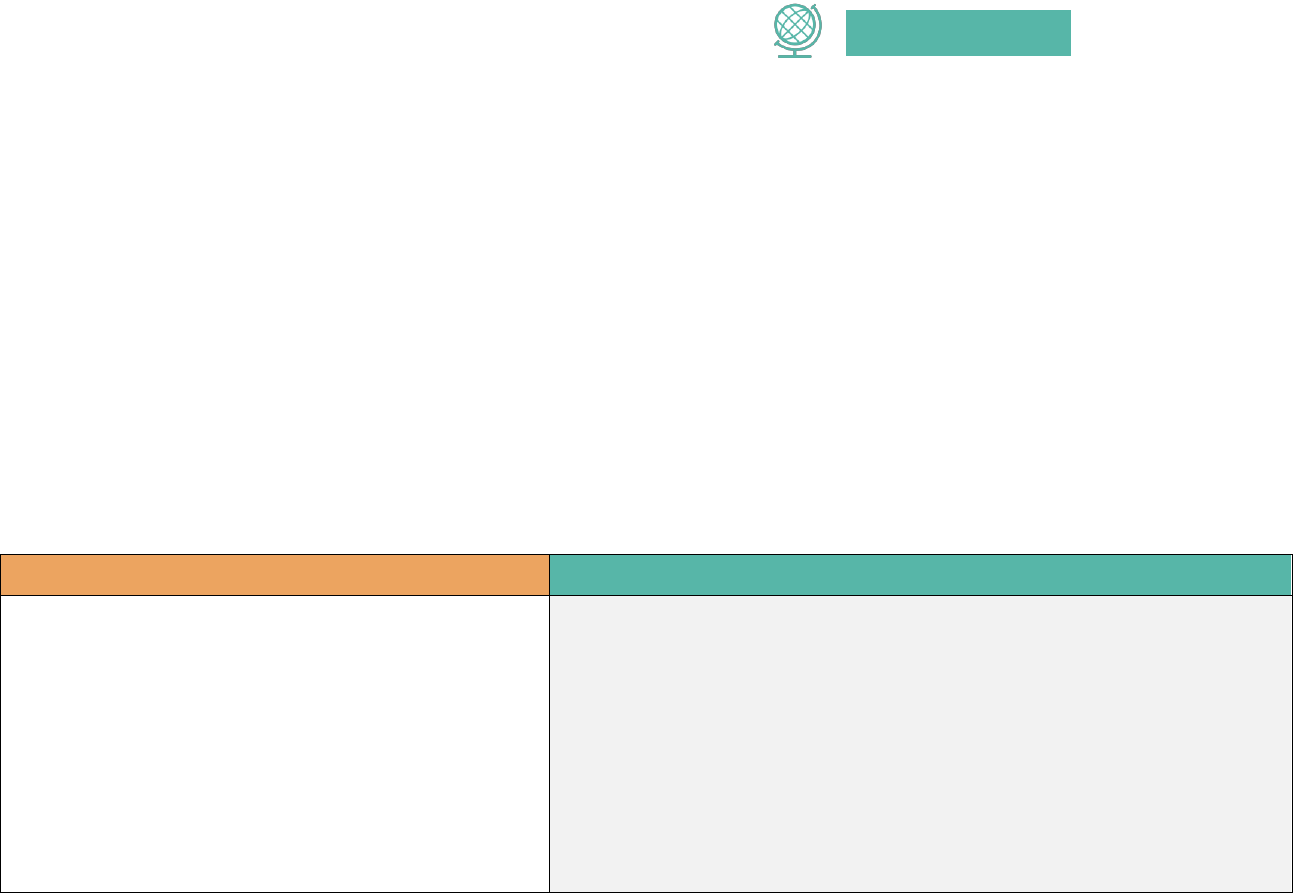
KINDERGARTEN
SOCIAL STUDIES
Mississippi Department of Education | Social Studies – Kindergarten IPG | 2024 63
SUGGESTED
INSTRUCTIONAL
PLANNING GUIDE
for Mississippi College and Career Readiness Standards for Social Studies
HISTORY
Standard K.H.2: Describe the impact of significant historical figures and events.
Objectives
Vocabulary
1. Identify historical figures that are used as
symbols of American culture (e.g., currency,
monuments, place names, etc.).
2. Examine historical events that are significant to
American culture (4th of July, Thanksgiving,
Presidents Day, Juneteenth, etc.).
3. Interpret how oral traditions helped express
important cultural and historical beliefs.
•
Historical Figures
•
Significant Events
•
American Culture
•
Symbols
•
Monuments
•
Currency
•
Place Names
•
Thanksgiving
•
Fourth of July
•
Presidents Day
•
Juneteenth
•
Oral Traditions
•
Cultural Beliefs
•
Historical Beliefs
•
Expressing Beliefs

KINDERGARTEN
SOCIAL STUDIES
Mississippi Department of Education | Social Studies – Kindergarten IPG | 2024 64
Learning Activities (History: Standard K.H.2)
• Symbol Currency Match: Students can match pictures of historical figures that appear on U.S. currency to the
corresponding denomination.
• Historical Events Timeline: Students can create a timeline of significant historical events in American culture, including
the 4th of July, Thanksgiving, Presidents Day, and Juneteenth. Students can research and discuss the significance of each
event.
• Oral Traditions Storytelling: Students can listen to and retell stories from American oral traditions, such as Native
American stories, African American folktales, or stories from early American settlers. Students can discuss the cultural and
historical beliefs expressed in the stories.
• Monuments and Place Names Research: Students can research and create presentations on the significance of American
monuments and place names, such as the Statue of Liberty, Mount Rushmore, and the Lincoln Memorial.
• Cultural Celebration Feast: Students can learn about and participate in cultural celebrations and feasts, such as a
Thanksgiving feast, a Juneteenth celebration, or a Fourth of July barbecue. Students can discuss the traditions and
historical significance of each celebration.
• Historical Figure Collage: Students can create a collage of historical figures who are symbols of American culture, using
pictures and magazine cutouts. Students can present their collages to the class and explain the significance of each figure.
• Holiday Crafts: Students can make crafts related to American cultural holidays, such as making paper turkeys for
Thanksgiving or red, white, and blue decorations for the Fourth of July.
• Storybook Creation: Students can create their own storybooks about American historical events or figures, including
illustrations and text to express important cultural and historical beliefs.
• Oral Tradition Role Play: Students can role-play characters from American oral traditions, such as Native American
trickster characters or African American griots. Students can act out stories and discuss the cultural and historical beliefs
expressed in the stories.
• Historical Figure Puppet Show: Students can create and perform a puppet show featuring historical figures who are
symbols of American culture. Students can use puppets to tell stories and express important cultural and historical beliefs.

KINDERGARTEN
SOCIAL STUDIES
Mississippi Department of Education | Social Studies – Kindergarten IPG | 2024 65
Real World Connections (History: Standard K.H.2)
• Historical Figures: Take students on a virtual tour of historical monuments and landmarks, such as the Lincoln Memorial
or Mount Rushmore. Have students identify the historical figures represented in each landmark and discuss their
significance to American culture.
• Historical Events: Celebrate holidays and events that are significant to American culture, such as the Fourth of July,
Thanksgiving, Presidents Day, and Juneteenth. Discuss the history behind each holiday and its cultural significance.
• Oral Traditions: Invite a guest speaker from a local community or cultural group to share their oral traditions and how
they express important cultural and historical beliefs. Alternatively, have students interview family members or
members of their community about their oral traditions and share their findings with the class.

KINDERGARTEN
SOCIAL STUDIES
Mississippi Department of Education | Social Studies – Kindergarten IPG | 2024 66
Differentiation (History: Standard K.H.2)
• Symbol Scavenger Hunt: Students can be given a list of historical figures, monuments, and place names that are used as
symbols of American culture and asked to find pictures or examples of them either in their community or online.
• Historical Event Timeline: Students can create a timeline of significant events in American culture such as the 4th of July,
Thanksgiving, Presidents Day, Juneteenth, etc.
• Oral Tradition Storytelling: Students can learn about how oral traditions helped express important cultural and historical
beliefs by listening to stories from different cultures and discussing the significance of the stories.
• Symbol Interpretation Activity: Students can be given a set of symbols and asked to interpret their meaning based on
what they know about American culture and history.
• Historical Figure Research Project: Students can choose a historical figure that is used as a symbol of American culture,
and research and create a presentation on their life and significance.
• Cultural Celebration Project: Students can choose a cultural celebration such as the 4th of July, Thanksgiving, or
Juneteenth, and create a project that explores its significance and traditions.
• Oral Tradition Performance: Students can work together to perform an oral tradition story or song for the class,
incorporating elements such as music, movement, or props.
• Historical Event Analysis: Students can choose a historical event and analyze its significance to American culture,
discussing the impact it had on the country and its people.
• Symbol Comparison Activity: Students can compare and contrast different symbols used in American culture, discussing
their similarities and differences.
• Cultural Artifact Show and Tell: Students can bring in cultural artifacts or objects that are significant to their family or
community and share their stories and significance with the class.
